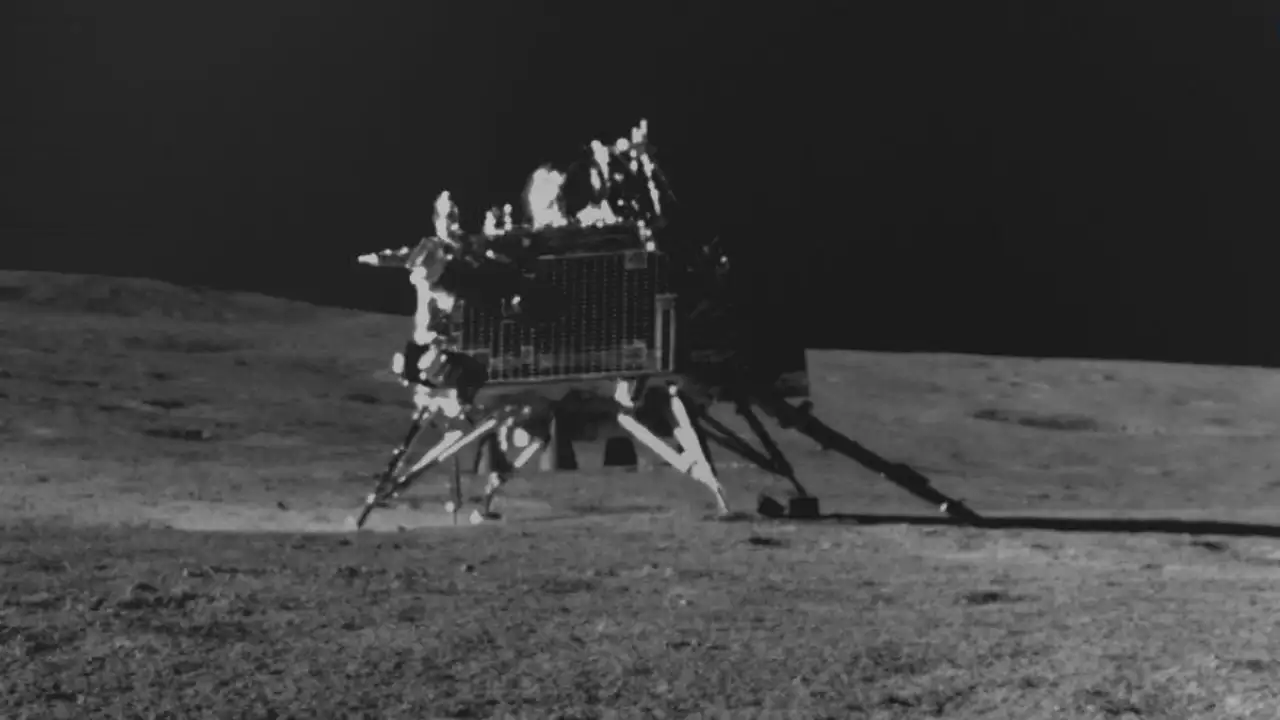Former ISRO Chairman Madhavan Nair expressed optimism regarding the possibility of reactivating the Vikram Lander and Pragyan Rover for the second phase of Chandrayaan-3, despite the moon’s frigid conditions. Nair likened the situation to taking something out of a freezer and attempting to use it, as the temperatures on the moon’s surface have dropped to below -150 degrees Celsius.
“Vikram Lander and Pragyan Rover have been in deep sleep for almost two weeks now. It is almost like taking out something from the freezer and then trying to use it. The temperatures would have gone beyond -150 degrees Celsius,” Nair told media.
ISRO is preparing to rouse the Vikram lander and Pragyan rover from their “sleep mode” after they completed their initial tasks. The Vikram lander touched down near the moon’s south pole on August 23 during the Chandrayaan-3 mission. Nair believes there’s a reasonably good chance that the system can be brought back online, though he acknowledges the inherent uncertainty given the extreme conditions.
“At that temperature how the batteries, the electronics and the mechanism survived is really a concern. Of course, adequate tests have been done on the ground to establish that it will work even after such conditions. But still, we have to keep our fingers crossed,” the ex-ISRO chief said.
He further said, “The solar heat will warm up the instruments and also recharge the batteries. If both these conditions are successfully met, there is a fairly good chance that the system will be operational again.”
He also asserted that if the lander and rover activate successfully then it will help to collect more data from the lunar surface.
“Once it comes to operation it is quite possible that we can move around for some distance over the next 14 days and collect adequate data, more data on the surface conditions on the Moon near the South Pole,” Nair said.
Meanwhile, former ISRO scientist Tapan Mishra highlighted the considerable challenges posed by the moon’s extremely low temperatures, which typically render plastics, carbon materials, and electronics nonfunctional. Nevertheless, he expressed hope that ISRO’s thermal management efforts might facilitate the resumption of operations when lunar daytime returns.
“Originally the Chandrayaan lander rover was designed for only 14 days of operation. It is expected that the temperature will go down to -140 degrees Celsius or lower, in the Southern pole it can reach down to -200 degrees Celsius. At this temperature, no plastic material, no carbon power material or no electronics can survive. They will crack. But I’m hopeful that ISRO must have done a lot of thermal management thing,” Mishra told the press in Kolkata.
He further said, “If they are successful in the thermal management, if ISRO’s design becomes successful, then tomorrow when the lunar daytime starts then all payloads in the lander and the rover may start working. Even if the rover doesn’t work and the lander works, it will really be a miracle.”
Mishra asserted that if it survives one night then it will survive many more lunar nights.
“And if it happens, then we will be in a league that can operate the lunar lander, rover, even throughout the year. If it survives one lunar night, I’m sure it will survive many more lunar nights and it may probably operate from 6 months to one year. That will be a great thing,” he said.
Mishra added, “I’m hoping against hope that though ISRO has already satisfied the lander rover could work for 13-14 days when tomorrow when it wakes up then it will be a great credit to ISRO scientists and also if it wakes up tomorrow then it will wake up again the next lunar night and probably it will last much longer. It will give much more valuable information.”
He also said that confirming the presence of water is the next important thing.
“There was a lesser induced spectroscopy instrument. It has shown us all the expected metals there. It has also shown us the presence of oxygen there, but we are looking for water. The oxygen can come from the breaking of any other silicon material which is actually the basis of all the rocks anywhere in the universe, also it can come from the breaking up of water.
“But if we could detect hydrogen there, detecting the presence of hydrogen would conclusively prove that there is water because hydrogen is never part of any other compound. So in that case we will be able to conclusively prove that there is water there. We have remote sensing-wise shown the presence of water. Now physically also we will able to show,” he added.
After having landed, the Vikram lander and the Pragyan rover performed different sets of tasks on the lunar surface for about 14 days, including finding the presence of sulphur and other minor elements, recording relative temperature, and listening to movements around it. One day on the Moon is equal to 14 days on Earth.
The stated objectives of Chandrayaan-3, India’s third lunar mission were a safe and soft landing, rover roving on the Moon’s surface, and in-situ scientific experiments.
The lander and rover were placed in “sleep mode” in early September, with ISRO maintaining hope for their potential reactivation.
Also Read: Canada’s Public Safety Ministry: Reject Hate and Condemn Threats Against Hindu-Canadians
Catch all the Latest Business News, Breaking News Events, and Latest News Updates on NewsX


















